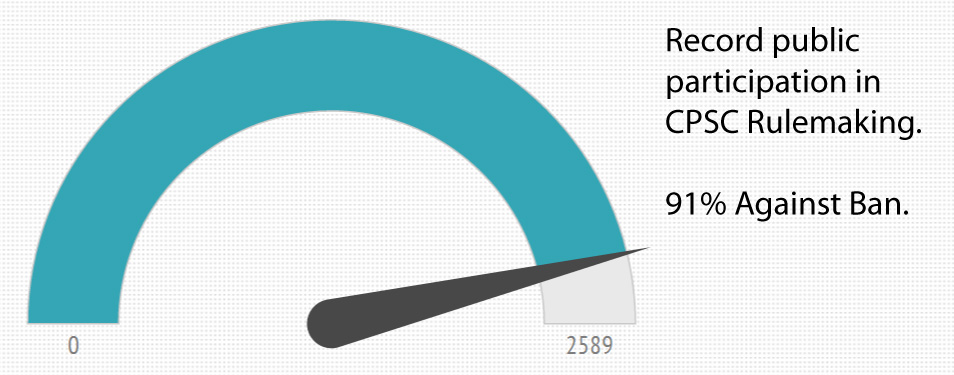Comment Session Shows Public Heavily Against Magnet Ban Rulemaking
Posted by Ronah Gatling on Jul 23, 2013 in Featured, Press Releases
The Consumer Product Safety Commission is legally required to receive and address the public’s input on matters of rulemaking. Their recent campaign to ban magnet sets had one such period of commentary, in which the public came out strongly against the magnet ban. In spite of this strong public mandate, the CPSC pressed their suit and continue to pursue their magnet ban today. This is a drastic shift in policy for the federal agency; ignoring the public they’re charged to protect.
The CPSC was created in 1972 to protect the public from faulty products that could cause injury. Denver’s Westword reports, “the most recent administrative complaint before the CPSC began targeting magnets dates back to 2001 against a company called Daisy Manufacturing Company, which makes BB guns. As that complaint notes, there were cases of at least 15 deaths and 171 serious injuries, including brain damage and permanent paralysis caused by defects in this company’s powerline airguns. And most affected were children under the age of 18. Another action against Red Devil gas grills from the CPSC came after 44 reports of consumers suffering burns to legs, hands and fingers, including some instances of third degree burns — after the grills collapsed during use.” The CPSC has worked well in the past to keep faulty products from harming consumers. This time they are going after a product that isn’t faulty at all.
Zen Magnets function exactly as they are supposed to. The problem lies with people, mostly children, swallowing magnets. Senior Commissioner Nancy Nord, of the CPSC, recognizes this fact: “There are two hazard patterns: Children under 5 exploring their environment with their tongue, and teenagers mimicking piercings. Also, the ban includes products that have not demonstrated to pose the same risk. Over-inclusive rules needlessly strangle commerce and innovation.” Zen Magnets are the product in question. They are in danger of being shut down by this across-the-board magnet ban, despite having no history of injury. Unfortunately, Senior Commissioner Nord is being overruled by Chairman Inez Tenenbaum and Commissioner Robert Adler, and the suit continues.
The procedure for rulemaking is outlined in the Administrative Procedure Act, which, “requires the Commission to solicit input from the public on proposed regulations and to respond to public comments in issuing its regulations.” Regulations.gov is the website where federal agencies receive these during scheduled rulemaking periods. For the two-month period between September 4th and November 19th 2012 the CPSC received 2,589 comments from the public; more than it has received over any other rulemaking. For perspective, of all the comments ever received, these comments represent over half of them.
An overwhelming 91% of respondents spoke out in opposition of the CPSC’s magnet ban. Pediatricians, gastroenterologists, and children’s advocate groups composed most of the 9% in favor of the ban. There were parents on both sides of the issue but the majority opposed the ban, citing personal responsibility and accountability for their children. Scientists, teachers, and students defended the magnets’ usefulness in understanding scientific principles. Many were amenable to age-based restriction and not an outright ban.
Dr. Alexander M. Kon, a Medical Director of a Pediatric Intensive Care Unit spoke out against the ban. “While I see the risk involved in this product, and indeed have cared for children who have ingested these [type of] magnets, I do not believe that they should be banned. There are many other far more dangerous products that remain on the market. Banning this product is not the answer; rather there should be appropriate warnings on the product packaging.” Many of those opposing the ban agree with the sentiment that these magnets are the least of our problems.
Appropriate warnings are already in place on packaging and contribute to Zen Magnet’s aforementioned history free from injury. Another key factor is that they available online only, so they can only be accessed by adults or mature minors under adult supervision. So the condition already exists where these products can be in the marketplace without causing injury. Opposition to this CPSC action could not be clearer, with nine out of ten people speaking out against the magnet ban. The legal precedents set by this case will shape their oversight in the future.


